ONLINE COLLABORATION & PARTICIPATION
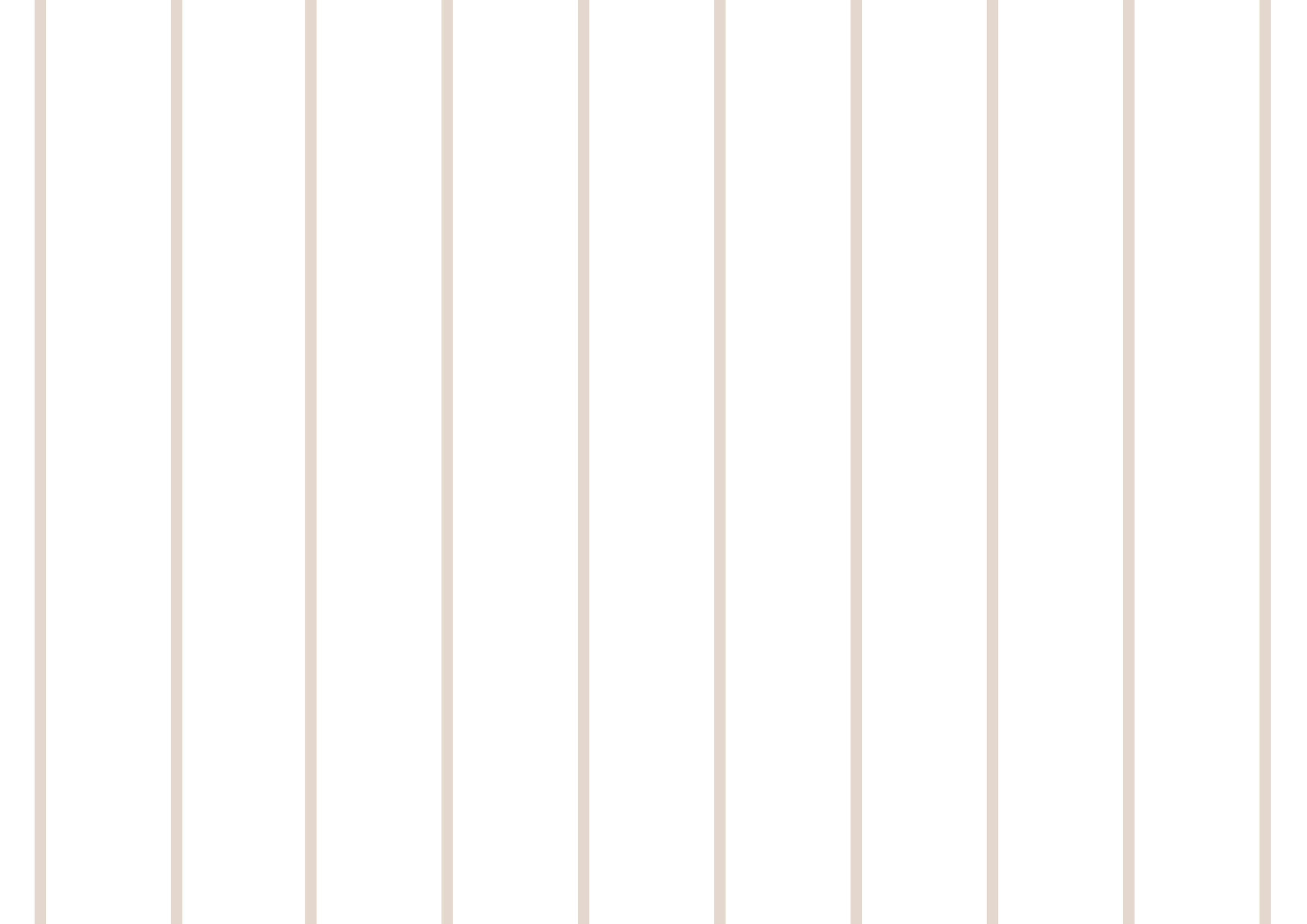
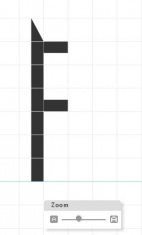

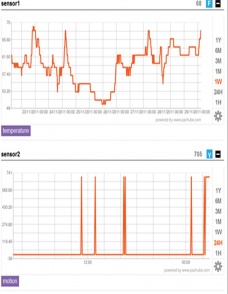
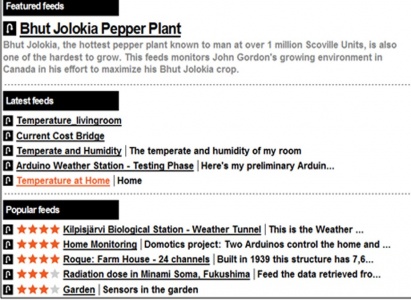
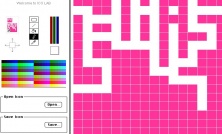

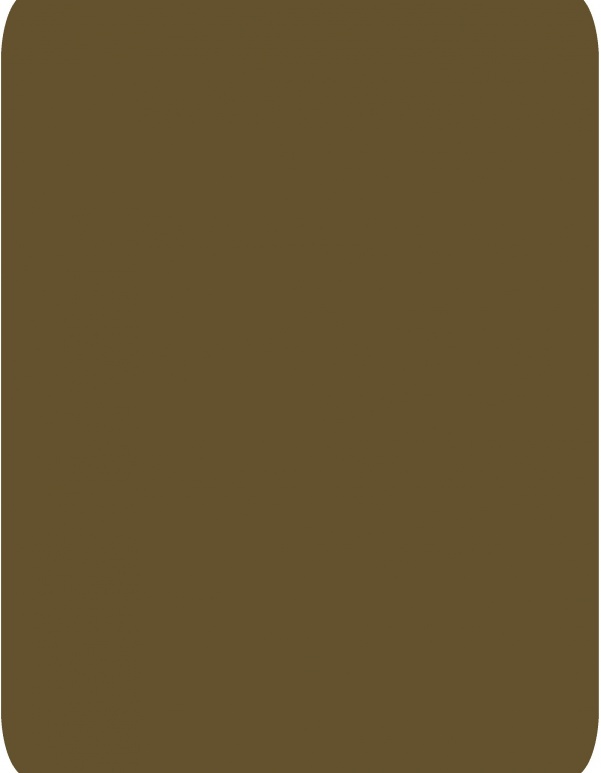



Pachube is an open source platform, created by Usman Haque. It is most known for storing data – in this case “inputting” data. It gives users the opportunity to share real time data by uploading gathered information- which can be collected from various devices, objects, sensors, buildings, and environments from all over the world.
As it is an open source platform, all data can be used, manipulated and republished by other Pachube users. This is based on user participation and collaboration.
Another feature Pachube is well known for is monitoring and visualising information. Radiation, temperature, weather, electricity, light and water are a few things that you can monitor using Pachube. Arduino, Arexx, Home Automation Hub, and Opengear are a few devices that help monitor data. These devices can be used to record and input information from a variety of sensors, monitors, switches, lights – etc. Once the device has captured/recorded the information, it is connected to the computer. The next step will be to upload the accumulated data onto Pachube; depending on the tool used, most devices are code driven, and therefore would need specific codes to process.
Monitored research is shown on a real-time graph, to show any updates made. On the side of each graph is a column that enables users to choose how they want to view specific data feeds over a period of time. For example: users can view the accumulated research over the past: hour, day, week, month, three months, six months and year.
By clicking on each, a different pattern of the information is presented; this happens depending on the amount of live data that is being received by the device at the time. For example if one was to record the amount of electricity used within a household, the more energy used, the more information that will be shown, and vice versa. In this sense, Pachube can help people save money, energy as well as being more environmentally friendly.
In my opinion a very useful feature that Pachube contains is the mobile device apps. This makes data gathering flexible as you don’t have to be behind a computer screen to view, receive or upload feeds. Although the only downside is that these apps are not compatible on any mobile phones other than: iPhone, Android, Blackberry, and phones that have the support of J2ME. There are seven different mobile applications, each carrying out a different function.
One that I found most interesting is Data Logger which is compatible with iPhone. It allows you record any data of your choice, like recording temperature or electricity meters, to custom feeds such how much coffee you drink per day. It also comes with a time-stamp and geolocation – so each time you add new information the time and place is stated.

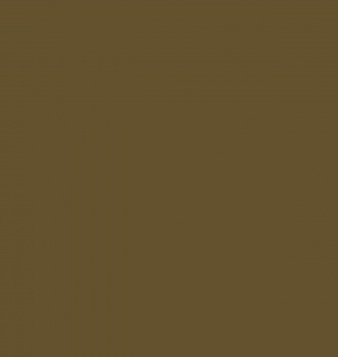

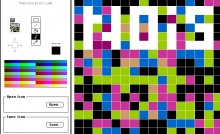
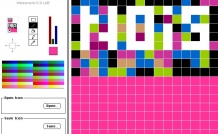
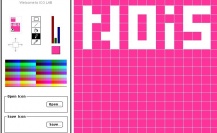
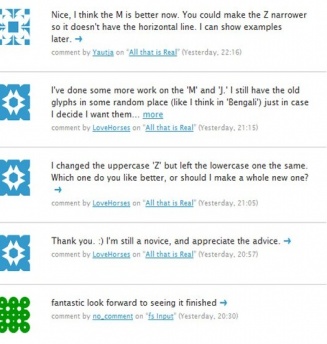
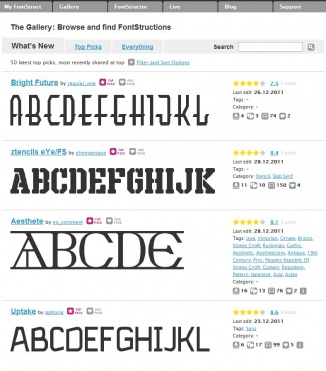
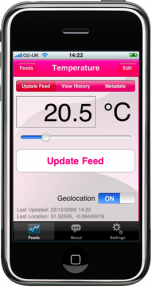



FontStruct is an open source platform (sponsored by FontShop) that allows for users to build their own typeface using a number of available geometric shapes/bricks, which function within a grid. Other than building your own typeface, FontStruct allows you to download fonts made by others as well as your own; once downloaded these fonts are ready to use and are suitable for both Macs and window applications.
Users can either share their work with others or keep it private. FontStruct encourages users to share their work, as others can give feedback, which can be very beneficial. You can also download or tag a specific font as you’re favourite. Another key feature about FontStruct is that it allows you to copy the work of some users in order to edit, remix and modify them, to produce your own version – this depends on the user’s specified license.
A list of sharing licenses are available for every user to choose from; for example you can choose a license that allows others to use your work for commercial reasons, or you may want to choose a license that grants for your work to be redistributed but without being changed.
The wall shows a number of fonts created and is an interesting way to look at peoples work. You can choose from a given list of what you want to see on the wall; e.g. whether it be only the letter ‘A’ you want to see, or the word FontShop. The wall slowly becomes covered with different styled fonts, until there is no more space on the page. Due to this, the first thing that was shown on the screen automatically gets pushed down until it disappears of the page, in order to give room for a new font to appear. This does have a pause feature in case you want to stop the page from carrying on. Also each of the uploaded material is linked to the home page of the designer of the specific piece.
One other good feature is that using the FontStruct widget, allows you to show your ‘FontStruction’ on your own website or blog.




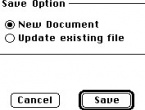
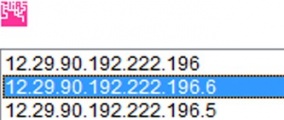
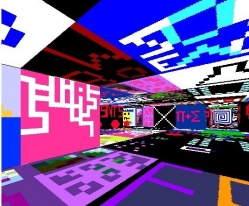



Screen shots of me editing a previous user's work, and making it my own.
You will realise that the server has been updated as a little icon of your saved image will appear in the top left hand corner.
After saving the document, it automatically updates on to the programme; you can browse around the maze in order to find it or have a look at other peoples work.

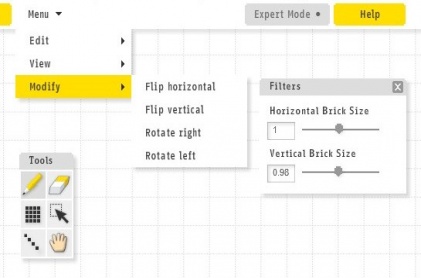


Collabyrinth is an open source platform, created by Andy Deck. You are given a grid based layout with a few drawing and paint tools in order to create an artwork of your choice. Have said this, not only can you create your own, but you can choose the work of other users to edit, change and modify. Once all changes have been made you can save the file as either a ‘new document’, or ‘update existing file’. There is a huge amount of work saved on the server – dating back to 2001.
An interesting feature within this programme is having an open source java maze. By clicking on this you will be directed to a 3D maze that you can navigate through. This maze is a visualization of all the artwork saved within this server; so instead of looking at a list of numbers to choose from, you can easily choose the document you want from the maze to open up.
This software, and the others previously discussed are all based upon collaboration, as people participate together in order to achieve a specific goal. Some people may ask who the author is, and who has the authority over the work
OPEN SOURCE SOFTWARE - PARTICIPATION
You can see your letter(s) together by saving your document and going to 'preview'; there is also the option of testing out your typeface to see how it looks like when written in.
Types of Licensing
Zainab Itani
Data Gathering
HOME